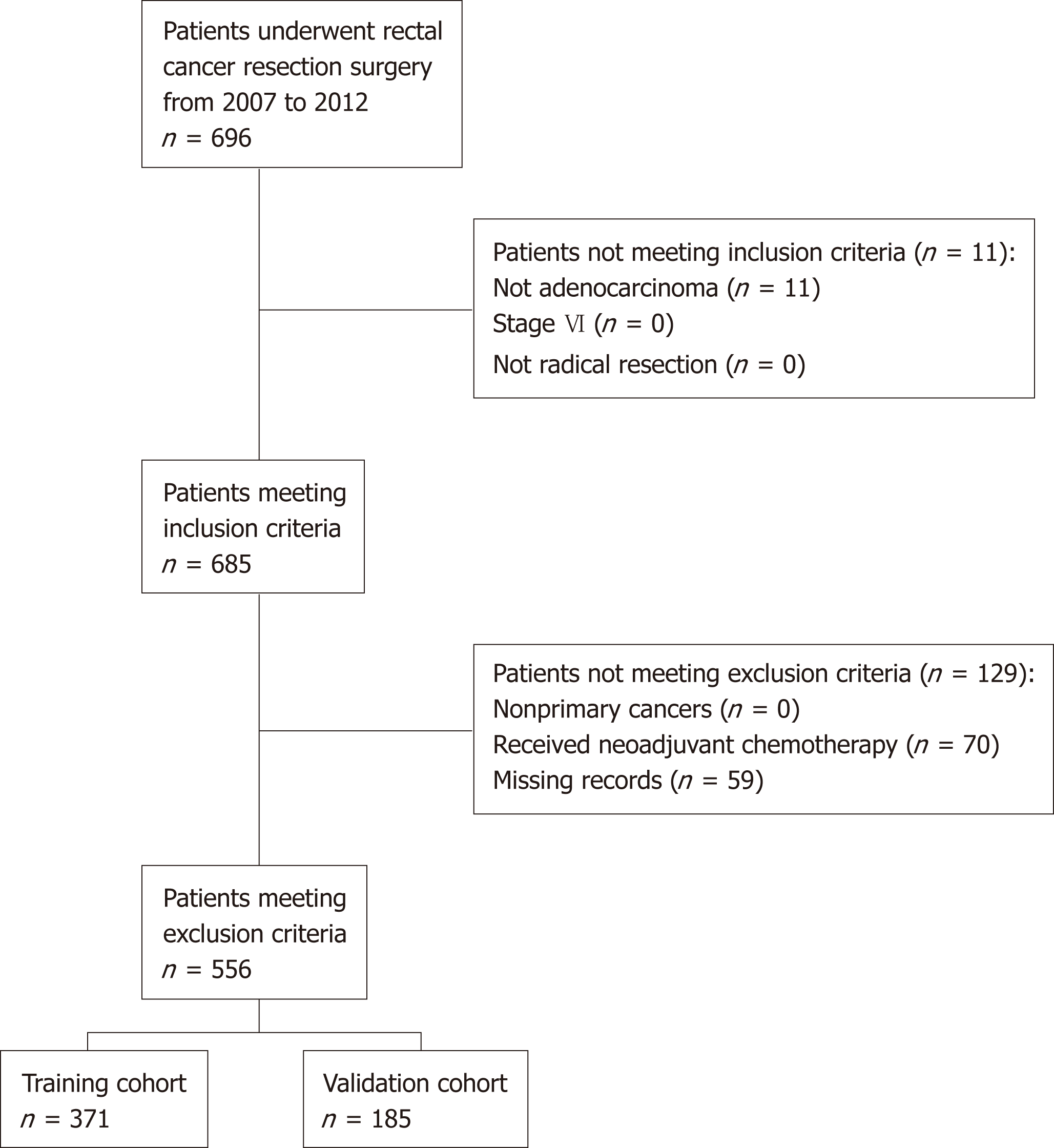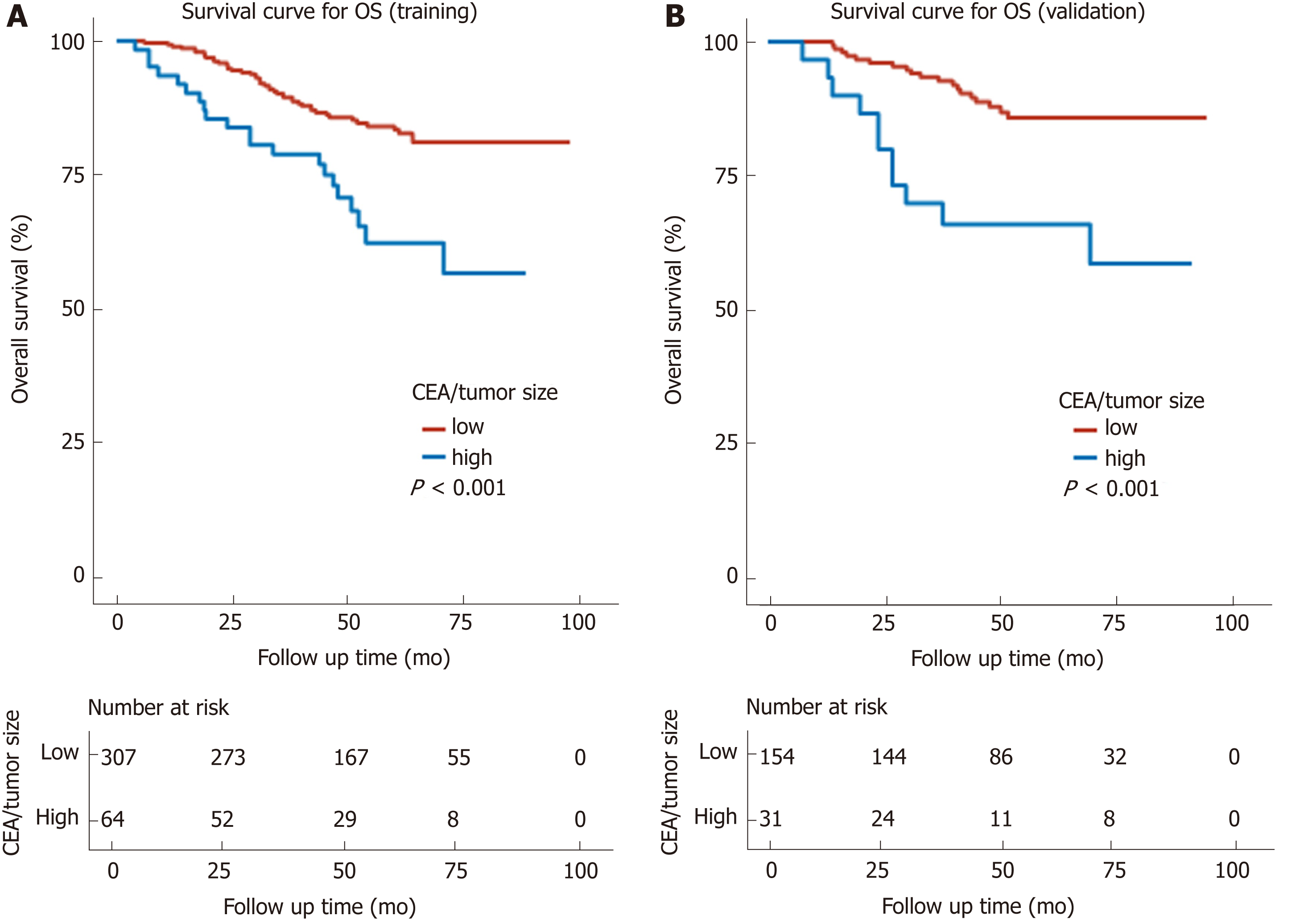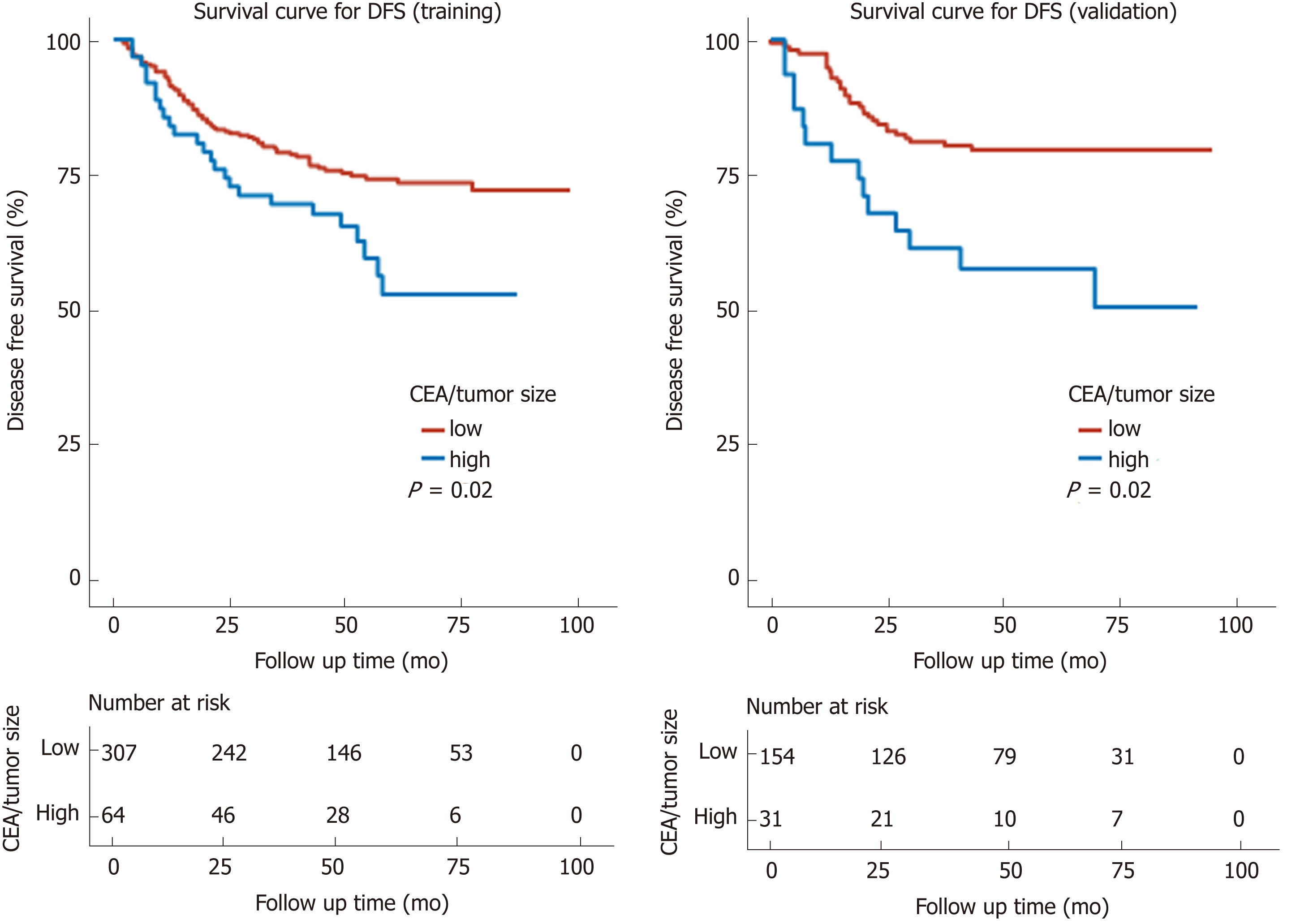Copyright
©The Author(s) 2019.
World J Gastroenterol. Sep 7, 2019; 25(33): 4945-4958
Published online Sep 7, 2019. doi: 10.3748/wjg.v25.i33.4945
Published online Sep 7, 2019. doi: 10.3748/wjg.v25.i33.4945
Figure 1 Flowchart of patient selection.
Figure 2 Maximally selected rank statistics for carcinoembryonic antigen/tumor size.
Maximally selected rank statistics were used to identify the optimal discriminator value for the carcinoembryonic antigen/tumor size, which was conducted in the training cohort. For every potential cutoff point, the absolute value of the standardized log-rank statistic was computed. The cutoff point that provided the best separation of the survival outcome into two groups, where the standardized statistics reached their maximum, was selected as the cutoff point. CEA: Carcinoembryonic antigen.
Figure 3 Kaplan-Meier survival curves and risk tables for overall survival.
A: Kaplan-Meier survival curves and risk table for overall survival in the training cohort. The 5-year overall survival (OS) of the high and low carcinoembryonic antigen (CEA)/tumor size groups were 56.7% and 81.1% (P < 0.001), respectively. B: Kaplan-Meier survival curves and risk table for overall survival in the validation cohort. The 5-year OS of the high and low CEA/tumor size groups were 58.8% and 85.6% (P < 0.001), respectively. The log-rank test was used to calculate the P-value. OS: Overall survival; CEA: Carcinoembryonic antigen.
Figure 4 Kaplan-Meier survival curves and risk tables for disease-free survival.
A: Kaplan-Meier survival curves and risk table for disease-free survival (DFS) in the training cohort. The 5-year DFS of the high and low CEA/tumor size groups were 52.5% and 71.9% (P = 0.02), respectively. B: Kaplan-Meier survival curves and risk table for DFS in the validation cohort. The 5-year DFS of the high and low CEA/tumor size groups were 50.3% vs 79.3% (P = 0.002), respectively. The log-rank test was used to calculate the P-value. DFS: Disease-free survival; CEA: Carcinoembryonic antigen.
Figure 5 Proportional hazards assumption test for overall survival by plotting the Schoenfeld residuals against time in the training cohort (A, C, E, and G) and the validation cohort (B, D, F, and H).
The X-axis represents the survival time, while the Beta values referring to age, TNM stage, differentiation, and carcinoembryonic antigen/tumor size are shown on the Y-axis. The constant mean of residuals across time confirms that the proportional hazard assumption holds for these covariate with all of the P-values > 0.05. CEA: Carcinoembryonic antigen.
Figure 6 Proportional hazards assumption test for disease-free survival by plotting the Schoenfeld residuals against time in the training cohort (A, C, and E) and the validation cohort (B, D, and F).
The X-axis represents the survival time, while the Beta values referring to TNM stage, lymphovascular invasion, and carcinoembryonic antigen/tumor size are shown on the Y-axis. The constant mean of residuals across time confirms that the proportional hazard assumption holds for these covariate with all of the P-values > 0.05. CEA: Carcinoembryonic antigen.
- Citation: Cai D, Huang ZH, Yu HC, Wang XL, Bai LL, Tang GN, Peng SY, Li YJ, Huang MJ, Cao GW, Wang JP, Luo YX. Prognostic value of preoperative carcinoembryonic antigen/tumor size in rectal cancer. World J Gastroenterol 2019; 25(33): 4945-4958
- URL: https://www.wjgnet.com/1007-9327/full/v25/i33/4945.htm
- DOI: https://dx.doi.org/10.3748/wjg.v25.i33.4945














